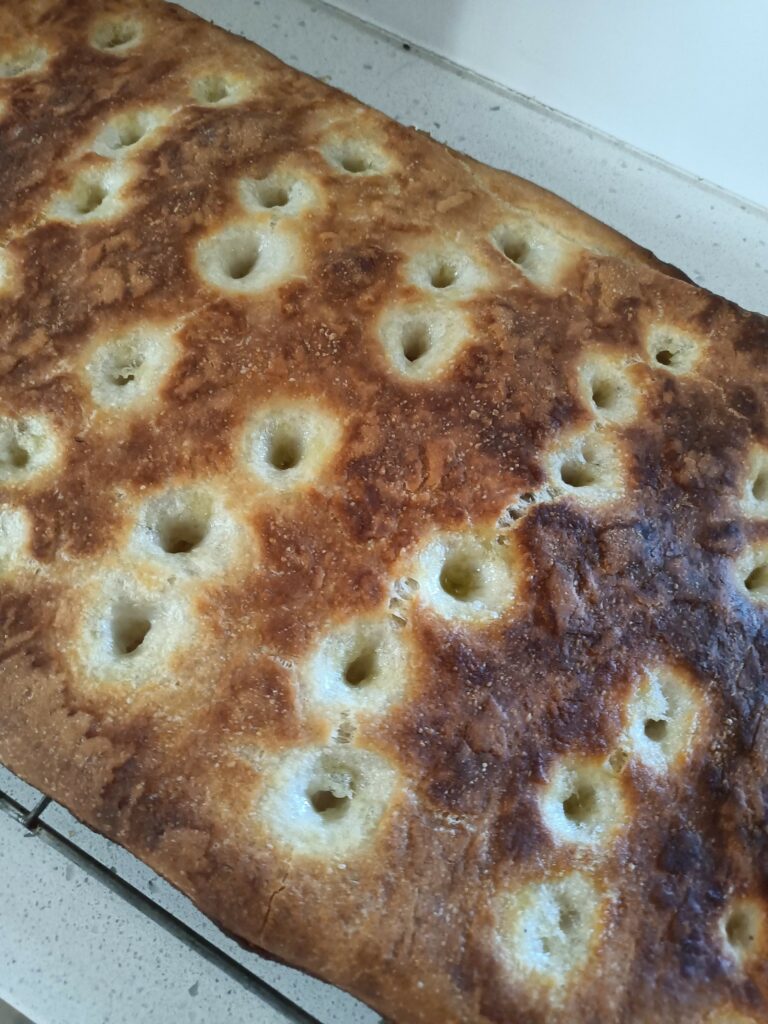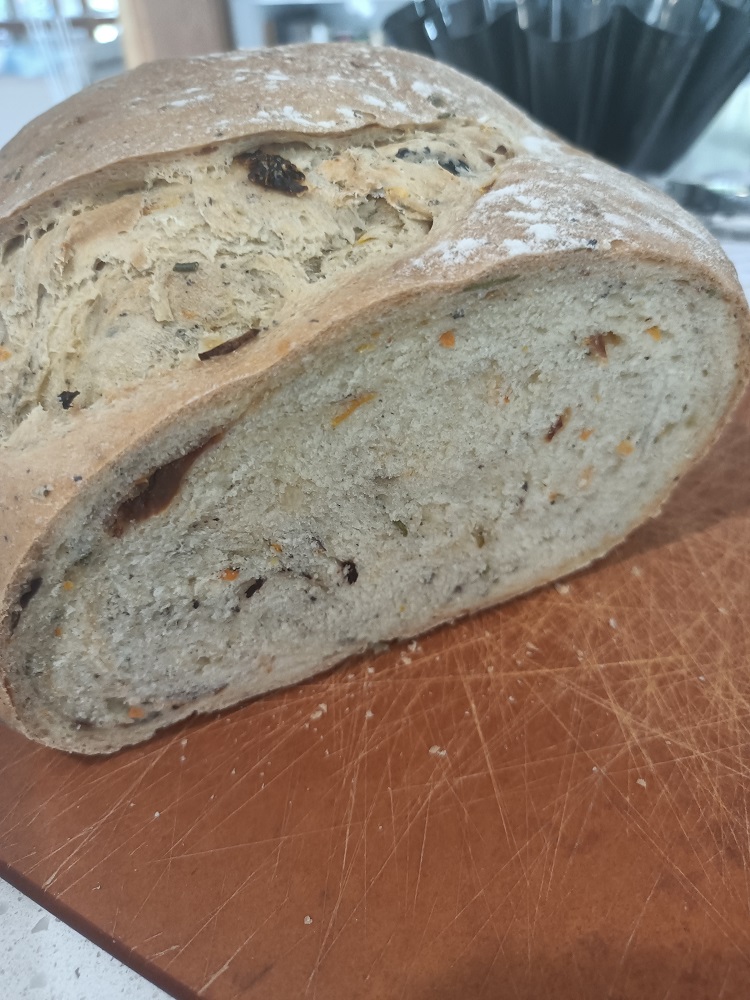This from Giuseppe’s Italian Bakes: Over 60 Classic Cakes, Desserts and Savoury Bakes. Giuseppe was fab on Great British Bake Off so I hoped to make far more than the one recipe I managed from this book. Maybe I’ll revisit it again at some time …
The recipe is spread out across multiple pages in the book so to save on space in my recipe folder I (loosely) write out the recipe below. The result was delicious but much thinner and crispier than you will be used to if you buy commercially available focaccia. I’m trying to get to the bottom of this – do I use the wrong size pan? Are commercial focaccia just a pale imitation of the real thing?
I made a half portion.
Dissolve 1/4 tbsp honey in 180g of tepid water in a jug. Put 300g flour and 2 tsp yeast in the bowl of a stand mixer and, with the mixer on a low speed very slowly pour in the honey/water mix. Once all the water is added add 1 tbsp olive oil and mix until the dough comes together. Sprinkle over 1tsp of salt and continue mixing for 10-15 minutes until you have a very smooth dough.
Flour the bench, tip the dough from the bowl onto the bench and cover with the bowl for 15 minutes.
Flatten the dough into a rectangle about 30×15 cm and envelope fold. Oil a 25x40cm tin (shallow is fine) and then push the dough into the tin. It will not, at this stage, cover the base. Cover and allow to prove for 50 minutes.
Now spread it further … you should now be able to cover the surface of the tin. Smooth the top with your hands, sprinkle with 1tsp of salt. Prove for 40 minutes.
In a glass jar, shake together 30g olive oil and 50g water to form an emulsion.
Lightly dust the focaccia with flour then dimple using half the length of your fingers (that is – deep dimples, not little finger tip ones). Pour over the emulsion – spread over with your hands – and leave to prove for another 50 minutes.
Pre-heat oven to 240C (dell’Anno doesn’t specify if this is fan or not … so I went 220C fan) – he does specify a lower shelf, so it may well be a good option to use a pastry bake/pizza option if you have one. Bake for 15 minutes.
When done, place on rack to cool and brush with a little extra olive oil while still hot for extra shine.
Best eaten immediately.
I do like his con cipolle option – he cuts onions into slices 3-4 mm thick, mixes with a little olive oil and microwaves for 1-2 minutes before spreading on focaccia (at the emulsion stage).
Delicious indeed, but not thick and fluffy!



